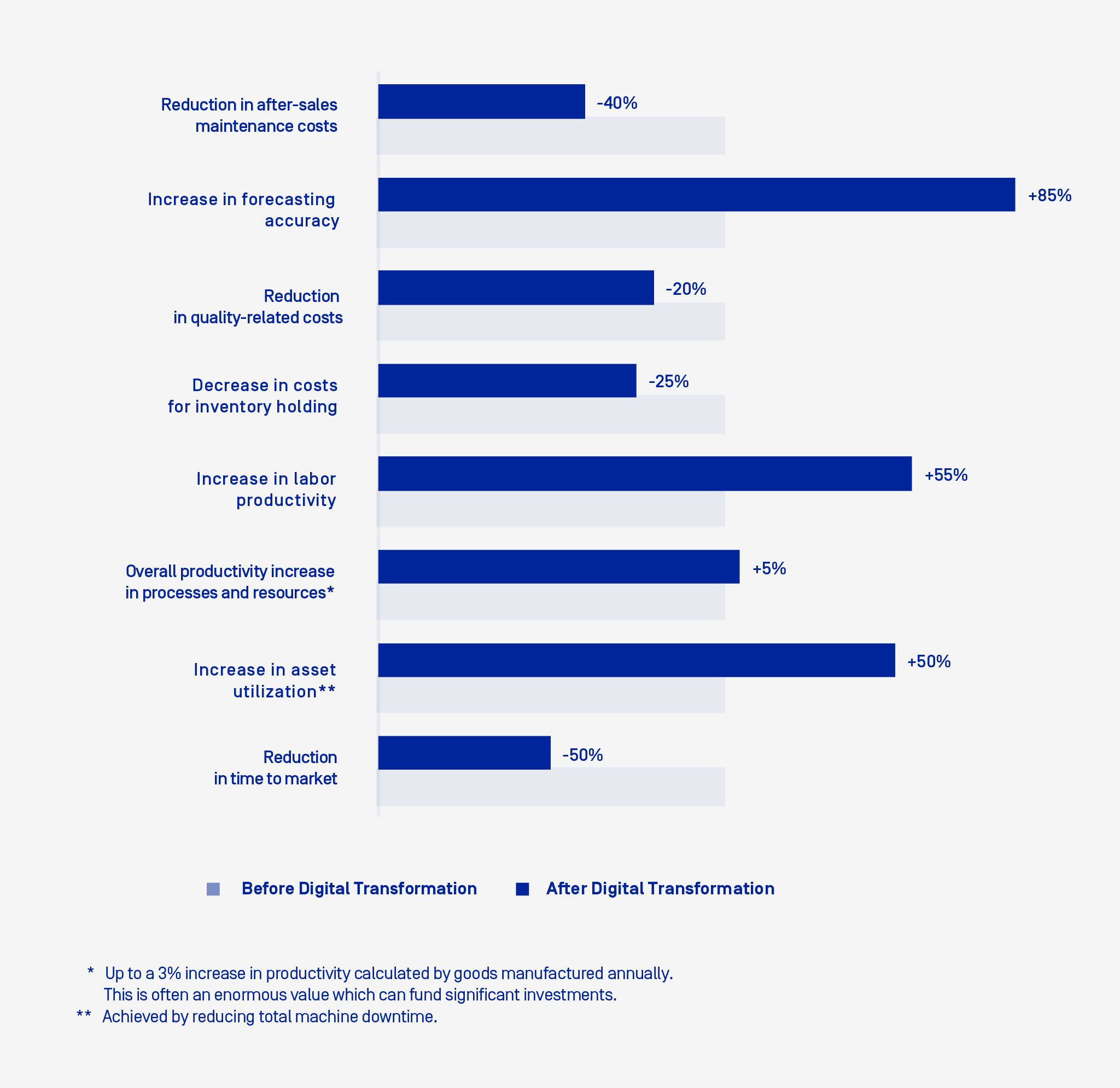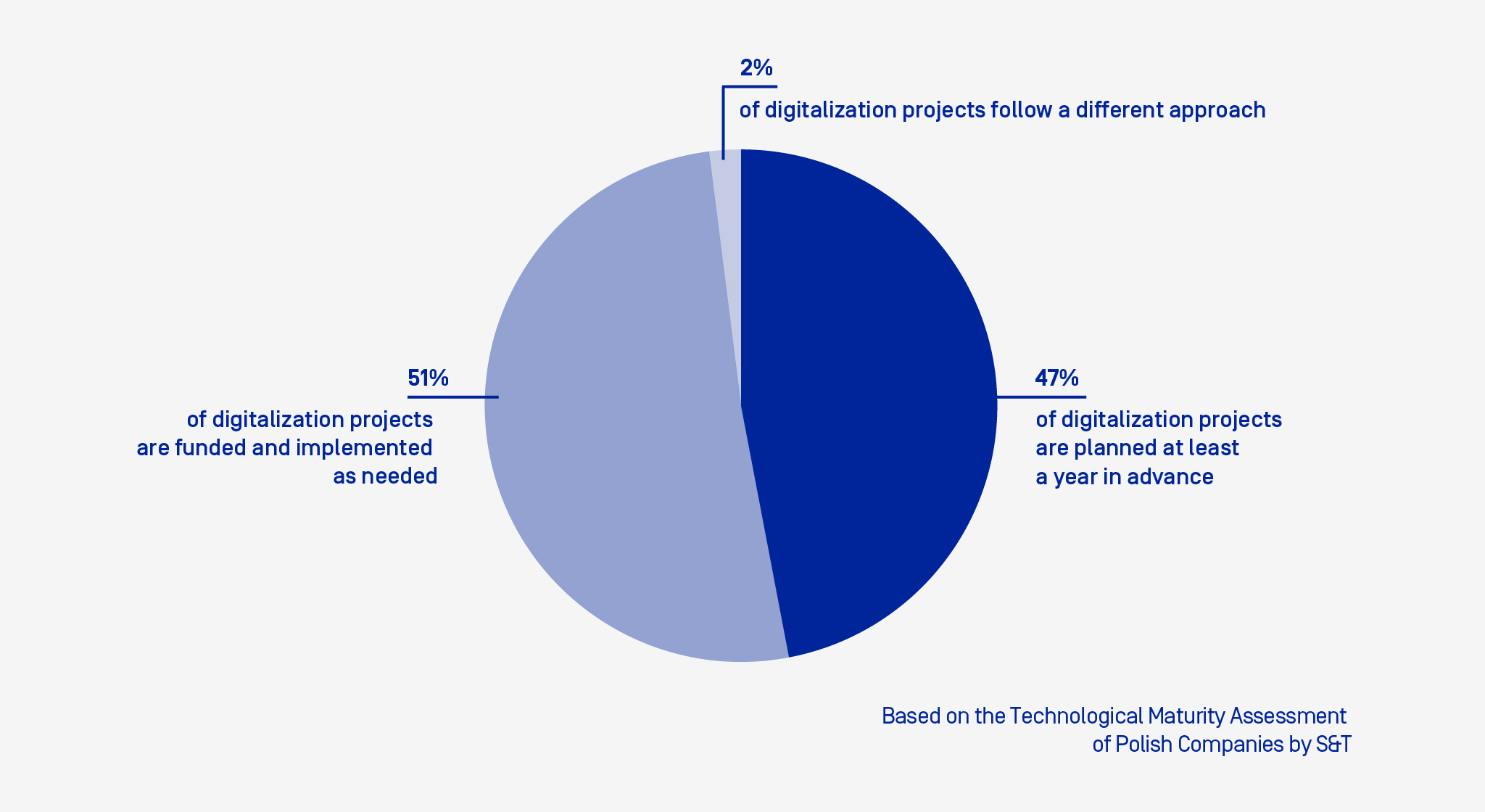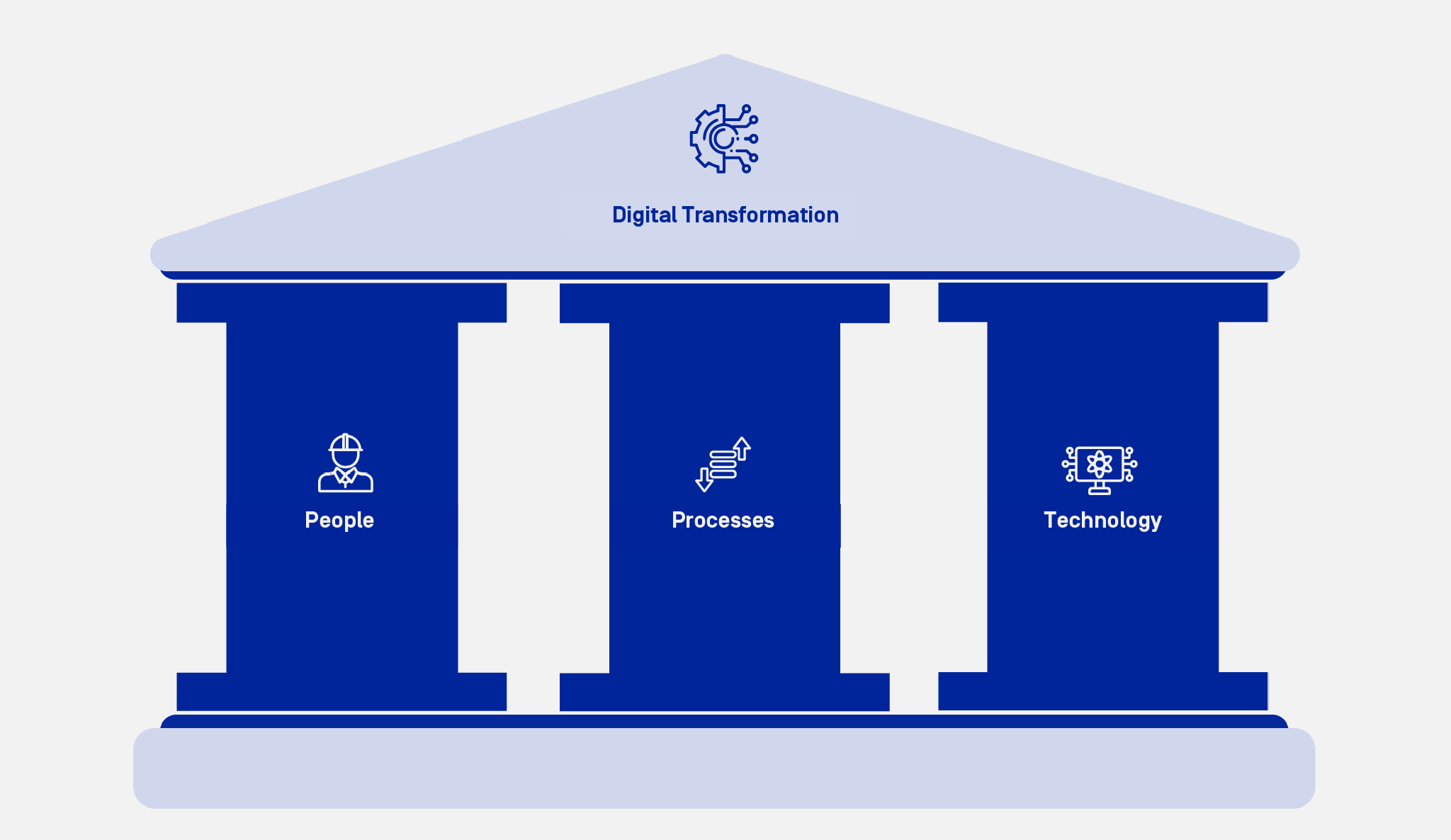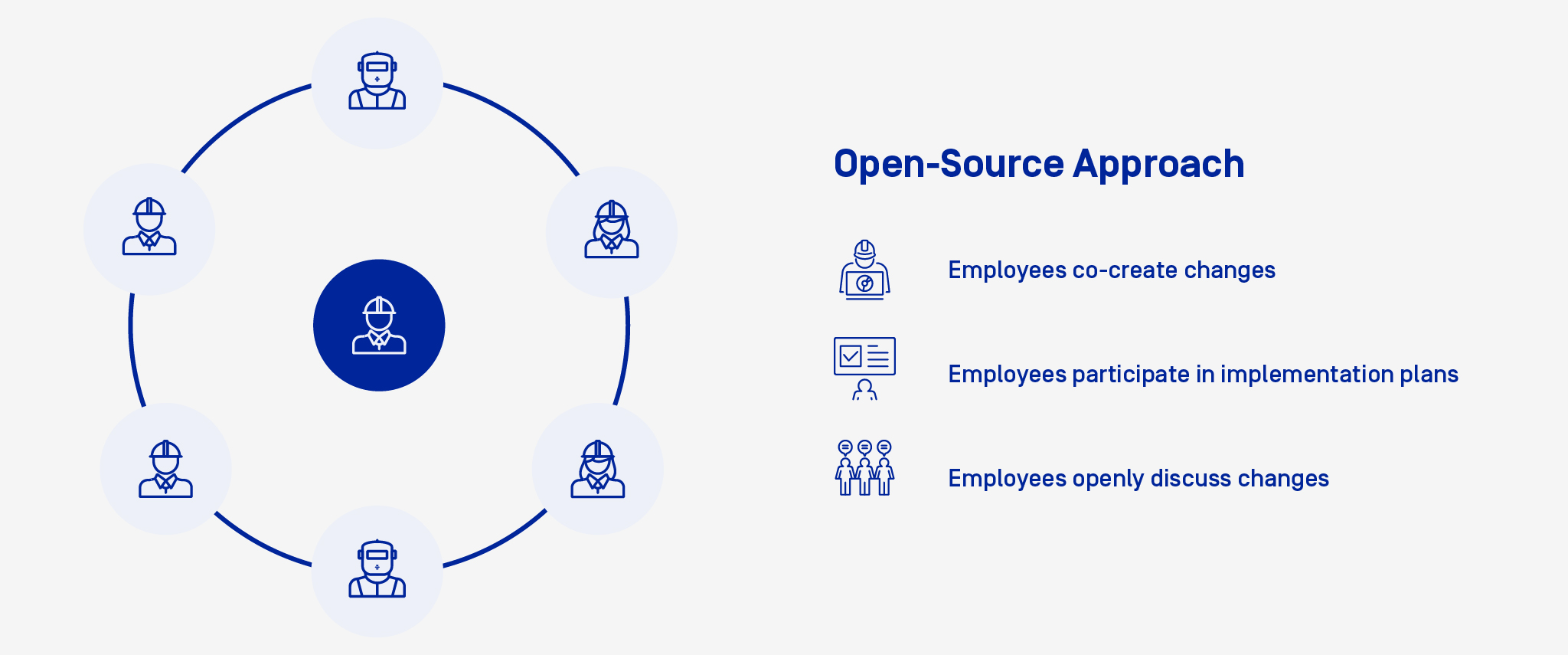
Digital Transformation: What It Is and Why It’s Worth Pursuing
The term “digitization” used to be a symbol of innovation, but now has become a common term. Regardless of industry or business type, terms like Digitization, Digital Transformation, and Digitalization are notions that we encounter everywhere. Manufacturing companies often see them as tools leading directly to Industry 4.0. But is digitalization alone enough to transform your facility into the Factory of the Future?
To answer this question, we must first ask another one: What does digitalization actually mean? As it turns out, the term can be understood in various ways. Let’s break it down and explore how to approach this endeavor to ensure lasting benefits.
To fully grasp the concept of Digital Transformation, we first need to clarify some basic terms. The narrowest of these is digitization, which refers simply to converting information into digital format. This is the transition from paper forms to spreadsheets or other dedicated digital formats created with various tools – essentially the basic digitization of information and the method of collecting it.
Read our article and discover how you can break free from paper in your company: Digital Transformation – Breaking Free from Paper and Spreadsheets in a Manufacturing Company
Digitalization is a broader term that expands the concept of digitization – it’s the digital processing and reporting of the obtained data. In essence, the notion could be described as digitalization of business processes.
Both digitization and digitalization fall under the umbrella of Digital Business Optimization, meaning that business processes remain the same, but with digital enhancements.
The broadest notion, Digital Transformation, encompasses both of the above. It also involves change management and restructuring entire business processes to harmonize with technological assistance. Digital Business Transformation is the process of re-engineering business with the use of digital tools.

While the goal of digitalization is to stay in the game, Digital Transformation builds a genuine, long-term competitive advantage. Therefore, it should be carefully considered what we want to focus on: optimization or transformation? Or perhaps both? Combining these two paths forms your digital strategy. When developing it, consider which blend of these approaches will deliver the optimal outcome, along with the benefits it brings and the costs it involves.
Why should you digitally transform your business and strive for Industry 4.0? According to McKinsey’s research, there benefits are substantial:
- 20-50 % reduction in time to market
- 30-50% increase in asset utilization**
- 3-5% overall productivity increase in processes and resources*
- 45-55% increase in labor productivity
- 20-25% decrease in costs for inventory holding
- 10-20% reduction in quality-related costs
- over 85% increase in forecasting accuracy
- 10-40% reduction in after-sales maintenance costs

Learn more about how digitalization can help manufacturing companies: Digitalization: Solving the Challenges of Manufacturing Companies
A survey by S&T found that over half of Polish organizations don’t invest in digitalization in a planned and coordinated way. These efforts often resemble putting out fires – when a problem arises, we seek solutions and start preparing the implementation.
About 47% of companies plan their digitalization efforts at least a year in advance. This is the standard approach, as annual budgets are prepared, with funds allocated for digitalization.
However, only 2% of organizations take a different approach. This narrow group develops comprehensive digital strategies and Digital Transformation Roadmaps based on them.

In the same survey, over half of the companies reported digitalization budgets below one million zlotys, while 17% declared a budget of over 10 million. This significant range shows that digitalization investments are essential to stay in the game and gain competitive advantage.
Then, why are some enterprises so reluctant to pursue Digital Transformation? The common excuse is a lack of resources or a starting budget. As one client once told us:
“There is never time or money to do something right, but ironically, we always find the time and money to do it twice. Once we’ve done something, there’s always a budget to fix it. Still, we resist doing it right the first time”.
This example speaks for itself and highlights a widespread problem. What’s the solution? Digital Transformation Roadmaps can provide a clear perspective on the entire transformation process and the necessary investments.
Like any change, Digital Transformation can be visualized as a temple, similar to the temples of excellence or quality. This temple is supported by three pillars:
People: This first and most critical pillar includes all the individuals involved in the change.
Processes: Digital Transformation aims to achieve lasting competitive advantage through more efficient, higher-quality, and more economical processes.
Technology: The technology pillar serves to support, standardize, and help sustain the change.

When implementing Digital Transformation, each pillar is essential. What happens if one is missing?
People + Processes: When our temple misses the technology pillar, a technological debt emerges. The transformation works at the first stage, but in the long-term, the debt grows and sooner or later the technology must be upgraded. As a result, the transformation needs to be repeated, causing additional costs.
This issue is common in companies that create Roadmaps, but whose core expertise lies elsewhere, such as Lean practices. These specialists are skilled in change management, have excellent people skills, and deep process knowledge, but they are often unable to provide technological support.
Processes + Technology: As previously mentioned, the pillar of people is fundamental. Without it, organizational resistance emerges, and the transformation is doomed to fail, rejected from the inside.
This problem often occurs among technology suppliers or systems integrators who excel in understanding both processes and technology but can’t engage people and establish permanent organizational change.
People + Technology: When processes are neglected, the errors that were initially related to processes are rebuilt and solidified as systemic. These errors are very difficult to uproot, as in addition to changing people, technological changes also need to be made.
The problem often arises with large consulting firms who perfectly communicate with people, especially the management, and know the technology well but don’t conduct Gemba or delve into the process layer. As a result, their work looks great from the strategic point of view but is not reflected in practical implementation. Similarly, when the Roadmap is designed by an ERP system supplier, they are rarely capable of diagnosing processes in production.
Today, many firms specialize in developing Digital Transformation Roadmaps. However, it is important to recognize that not every transformation will be sustainable and long-lasting.
Supporting Digital Transformation with all three pillars ensures its stability and prevents it from becoming just a short-lived effort. Providing durability can’t be separated from the organizational culture – specifically, the people pillar – and the implementation of open-source changes. Employees should be actively involved in shaping the change, participating in the implementation plans, and openly discussing the change. However, we need to remember that leadership sets the example for the entire organization.

How to approach Digital Transformation without closing the door to future growth? Read our article:A Strategic Perspective on Digital Transformation
Digital Transformation is a long process. Success is possible even with less advanced technology, but it will never be achieved without the engagement of the people and a thorough review of the existing processes. We must be aware that the greatest change is the one in our minds. Building the right mindset will make it possible to utilize digital tools, for the purpose of optimization or re-engineering business processes.

Michał Zieliński is a graduate in Automatic Control and Robotics, as well as a postgraduate Lean Six Sigma Black Belt from Gdansk University of Technology. He is a partner at ImFactory, where he works as a Project Manager and Head of the Digital Consulting Department. At ImFactory, he is involved in shaping a vision for the advancement of IT systems in manufacturing environments, evaluating the digital maturity of enterprises, and planning their Digital Transformation journey. His projects encompass a wide range of activities, from overseeing surveillance and monitoring installations to implementing comprehensive integrated manufacturing management systems.
See also
Want to learn more? Visit our Knowledge Base, where you'll find articles and webinars by experts to expand your knowledge.
Check if Digital Transformation is the Answer to Your Company's Needs


































